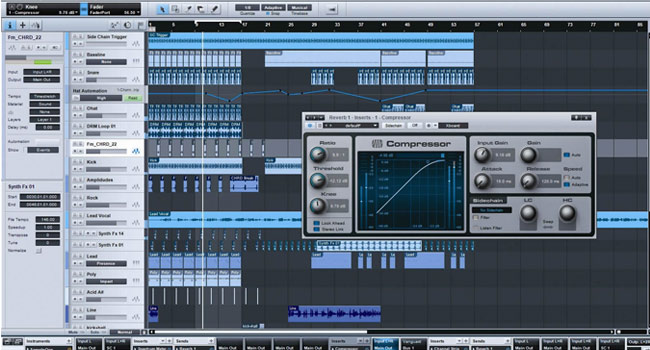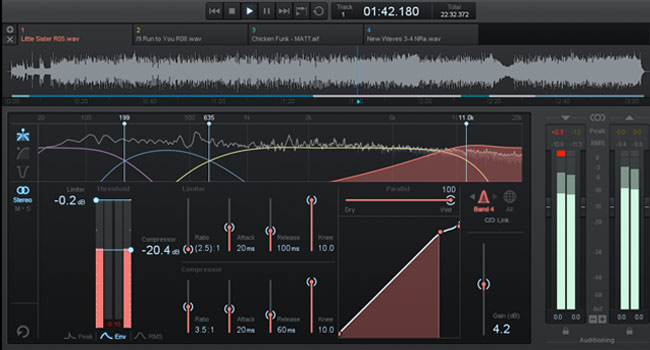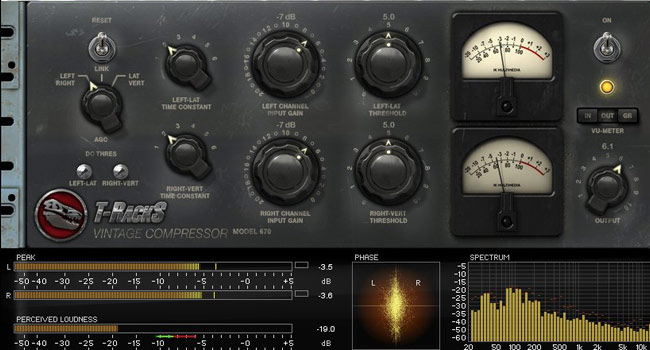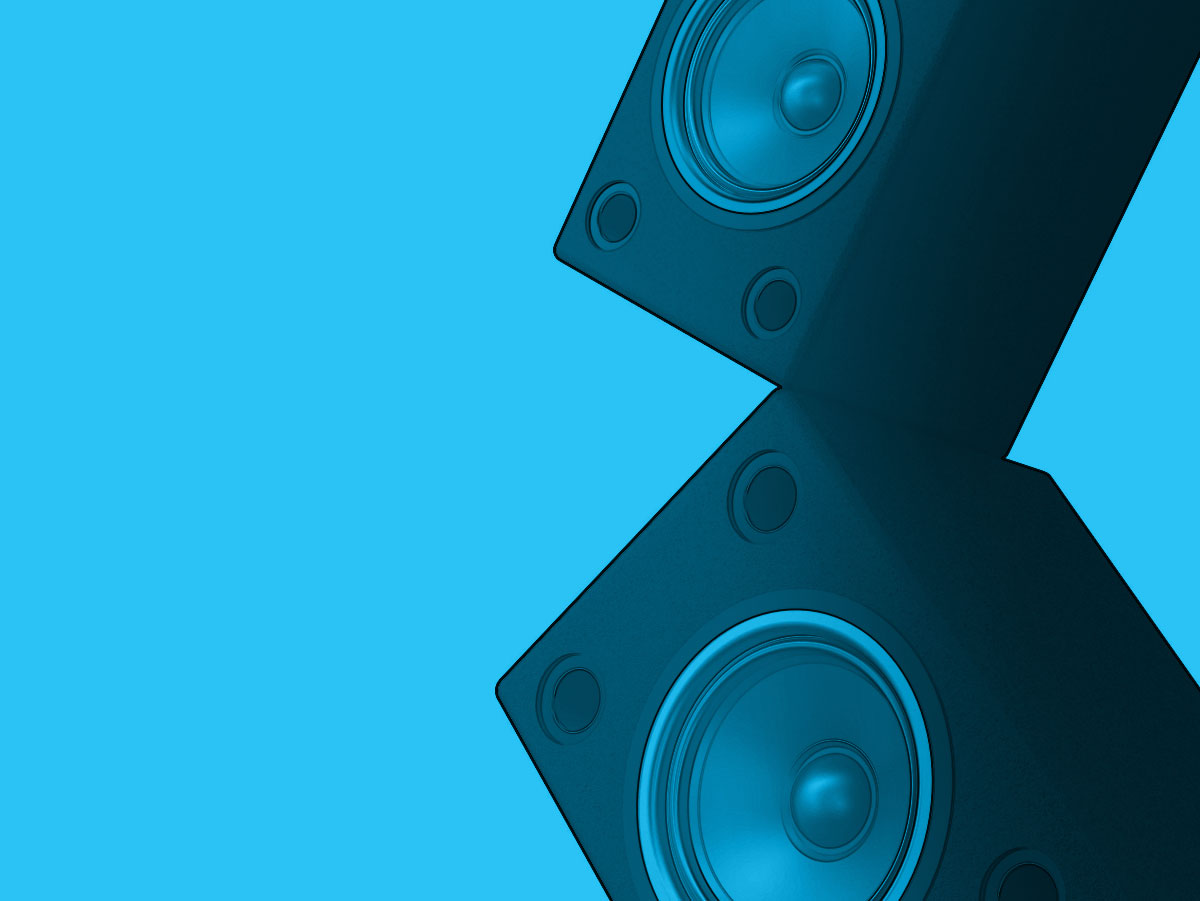- Published Jun 23, 2015 in In The Studio
Long since considered a dark art, mastering is now something many indie musicians do on their own. The question is, How? And, is it good enough?
Mastering is one of the few creative processes that still finds itself quite high up on a pro-audio pedestal. The creation of music—the recording, mixing and production—is all within the hands of the home user. But mastering still seems to be just out of reach.
I've read a lot of articles that support the idea that mastering is somehow special, or more professional—the reserve of hardened and wizened mastering engineers with mystical powers of "finishing". I'm a great supporter of professionals in any field of creativity, but I'm also a supporter of the guy who's doing it at home, and who just wants to make some music and get it out there.
First, the disclaimer:
If you want to get your music mastered "properly" then please take it to a mastering house where they will gladly warm up your tunes and relieve you of a load of cash.
The benefits are that you're getting a fresh pair of ears, some fabulous equipment, and a bloke who knows how to use it. However, if we followed that logic then we might as well hire session musicians and a posh studio rather than squeak away at it in our bedrooms, attics and sheds.
So, let's look at the possibilities and advantages of doing it yourself.
What is Mastering?
Mastering grew out of the need to prepare music for its final medium, vinyl, tape, CD, etc. Equipment was introduced to even out the levels between tracks, EQ it in a way most appropriate to the format, and compress to flatten an accidental peak.
Before too long, all sorts of tools were being used to "finish" or "sweeten" the source material. It's now recognized as a creative post-production process that can incorporate all sorts of equipment and specialist skills. In a nutshell, you slave away on your music, getting the most perfect sound and the most fabulous mix you can, and then give the mixdown files to someone else who completely changes the character of your sound (hopefully for the better)and beefs up the volume, making it ready for production.
Can we do it ourselves?
Of course. One of the real bits of wisdom from mastering is the idea of getting someone else to listen to your music—someone with a decent ear for how things sound.
Sometimes when mixing, you get so into your music that you can no longer hear the mistakes or the problems that would be obvious to someone else. Always get another listener and remember to try not to be offended by their comments!
Having a second stage to working on your music—coming with a fresh approach after you've finished your mixes—is also a really good idea. It feels like you are progressing and you're putting your focus, not on arranging or comparing levels, but on the overall sound and how different tracks sound together on an album.
However, in some ways this is a missed opportunity. In the pro world, once it's reached the mastering house, the mixing is already complete. The band has gone home, the studio time is over and so the engineer has to work with what he's given.
In our home studio environment, where we are the band, engineer and producer, we can do whatever we want. If an error appears at the mastering stage, we don't have to try to fix it with some clever compressing. We can actually go back to the original project, adjust the mix or even re-record the track. Because of this flexibility, I'm inclined to see mastering as less of a separate process but rather an extension of the whole process.
What are we trying to achieve?
By working on the overall sound, we should be able to raise the volume, bring out dynamics, even out the harmonic content and hopefully introduce a bit of punch.
What it all comes down to is multi-band compression. You slap the compressor onto your mix, meddle with the controls, and bingo: your mix either sounds better or it sounds really boomy and rubbish. This is the tricky bit. There's no doubt that the key to mastering is the correct use of compression, and this is usually where we home-users come unstuck.
I thought I knew about compression. I worked in a music shop for many years and would sometimes spend all day demoing hardware compressors, compounders, limiters and vitalizers to eager buyers.
The problem is, when doing a demo, all you are trying to show is the effect of riding the threshold so you hear the snare and kick drums squash and pump. As long as it sounds louder (which it always does because you've nudged up the gain) then the shopper buys it. Easy!
However, when it comes to mixing and mastering, you tend to use compression in ways that you can't really hear as obviously. So, before anything else, you need to get to know a compressor plug-in - one will do, maybe it came with your software, doesn't have to be a posh one from Waves or something, just as long as you know what the knobs do.
Something that really helped me was an article in Sound On Sound magazine about compression that came out just as I was mastering my last album. Mike Senior wrote the clearest article on the subject I've ever read.
A friend and I were finishing albums at about the same time and we talked a lot about this mastering lark, what to use, how to use it and whether anything actually sounded better afterwards. We were both frustrated that just using mastering tools on the final mix didn't seem to be giving us the even sound we were after. My friend suggested that perhaps it would be better to go back and compress individual tracks, so that the mix was better before mastering - great idea, obviously! So instead of expecting the mastering plug-in to do all the compressing work I could apply a little bit of compression elsewhere first. It was genius. So, i chose a compressor and learnt exactly what each bit did and what it meant and starting adding compression to the vocal and instrument tracks, bringing them forward in the mix, but also looked at the electronic tracks - just to balance things better.

The Tube-Tech CL 1B compressor.
My weapon of choice was the Tube-Tech CL 1B compressor for Powercore (which is one of the few posh bits of gear i own) - the controls just seemed to make sense to me. All i'm doing is what i should have done in the first place - applying some compression. The music i'm making is very dynamic so i don't want to just squash everything so here's how i approached it:
- Solo the track, insert the plug-in.
- Switch the meter to "input" so i could see the level coming in
- Adjust the threshold knob down to the same level
- Switch the meter to "compression"
- Adjust the threshold until the meter was showing about 3dB - 5dB of compression
- Adjust the ratio knob to alter the severity of compression - I left this quite low as i was looking for light compression
- Un-solo the track & adjust the gain to compensate the drop in level.
This isn't a mastering process - this is mixing properly! But my point here is that it was the mastering process that revealed these issues to me and pushed me into creating a better mix in the first place. Something similar happened at the next stage.
Mastering
I mentioned at the start that there is some wisdom to the idea of doing this separately. I would recommend using a different piece of software to that which you created the music in - it's not essential but it does give that feeling of progression and approaching the material from a fresh perspective. I was lucky enough to be on the beta program for Presonus StudioOne and it has a fantastic mastering suite built into the software. Previously I've used programs like Sound Forge but StudioOne had some specific tools that were really very helpful in the mastering section. Firstly it has a good mastering preset section which automatically loads up an EQ, a multi-band compressor and a limiter - just what you need. In additional to that it loads up a Spectrum meter and Phase meter - these are extraordinarily useful. Most people go on about how it's all to do with your ears - which it is of course - but i find it very helpful to be able "see" what's going on. The spectrum meter gives an instant impression of where your music is harmonically heavy and where a bit of EQ would smooth everything out. What you tend to find is that there's a lot going on in the middle of the mix - the mid range where the guitars and vocals often sit - and what you need to do is flatten the middle and raise the top and bottom a bit. This is done by adding a smiley EQ before we get to the compression.

PreSonus Studio One software.
The StudioOne multi-band compressor is a lovely piece of work and is much easier to use than many i've come across. Often, even when you're familiar with hardware compressors, the multi-band one seems complicated and difficult to use. I have a really very posh one on the Powercore called the MD3 and i cannot make head nor tail of it. The idea is simply that you are applying bands of compression differently to different areas of the mix. So you might need to squash the middle a bit but leave the top end very free and floaty, and then serious squish the bottom end - this is the sort of thing you're trying to do to give your music the best overall sound. What you actually do with the multi-band compressor is up to you - trial and error or just make small adjustments and have another listen. I found it really easy to go too far - probably because i wanted to make sure i could hear the difference - and that would result in very squashed mixes, with a loud noise floor and no dynamics. You should gently pull down the threshold on the band you want to process until it's working a little bit and then go onto the next band - gentle adjustments is the best and if you can store presets then do that often so you can easily pull back to somewhere good if you go too far.
Then, go off and listen to it. I can't stress how vital this is - get out of your room and listen to your mastered track somewhere else - in your car, on your hi-fi, your iPod or MP3 player, someone else's hif-fi. You might well be alarmed by what you hear. My first mastering attempt went straight onto my MP3 player, I got into my hammock, plugged in my ear buds and a couple of minutes later i was back in my shed shaking my head at what a disastrous job i'd done. It was all over the place - for some reason the bass was really loud, other sounds were distorting slightly and there was all this background noise i hadn't heard before. It was another one of those moments that sent me back to the original projects. I was able to edit out a lot of noise - it was simply due to lazy editing, and after remixing with my ear buds on I was able to identify the problem areas and again improve my mix. After that the mastering sounded much better.
Which Mastering Plug-ins?
The one that comes with your recording software (assuming one does) is a good starting point but there are a couple of packages worth looking at if you want to use some better or more helpful tools.
My friend used Ozone from iZotope—thought it was marvelous, he did. I struggled to get past the greenness of it - for some reason i couldn't seem to grasp what was going on. However, what it did have was a wide range of presets that gave you a good instant idea and improvement. I think as an all-in-one package it's excellent - it keeps you in a single place, concentrated on an integrated collection of tools. One of the best things is that you can download a 10 day free, fully working demo. I mastered my album in a weekend and so it was perfect, i could try it and use it for free. Obviously next time i'll have to pay for it.

Ozone mastering software by Izotope.
My choice, other than the tools in StudioOne and the CL-1B, was IK Multimedia's T-Racks. T-Racks has been around for years and years and was the first dedicated software mastering tool. It was kind of a garish yellow and funky, very raw but great at making tracks sound instantly beefier. The newer version 3 is a great step forward and brings a load of great sounding compressors and limiters to your finger tips.

T-Racks by IK Multimedia.
There was one specific feature though that was enormously helpful - the metering. Along with a spectrum meter, phase meter (never quite sure what i'm supposed to be doing with that) and peak meters it has this interesting little meter called "Perceived Loudness" which gives an impression of how loud the music will sound to the listener - it's difficult to explain really but it has a suggested loudness indication depending on what sort of music you're doing.
So you can select "electronic music" and it will show you a zone in which the perceived loudness of most electronic music can be found (it's the green and red single line on the meter). As you are mastering you can aim to get your perceived loudness meters into that range. It really worked for me, gave me something to aim for and also an indication that I'd done enough.
Summing up
Mastering doesn't have to be mysterious. You can see it as a bunch of tools designed to get your mix up to the right sort of levels for commercial CD's - vital if you are hoping your music will appear alongside traditionally professional tracks. If you spend the time learning to use compression it will benefit your whole mixing experience. Always listen to your music on more than one set of speakers and get someone else to listen as well - it will highlight all the holes you've been ignoring. This was simply my journey and what i found worked for me on this album - the rules are there to be broken, experiment and have fun with it.

